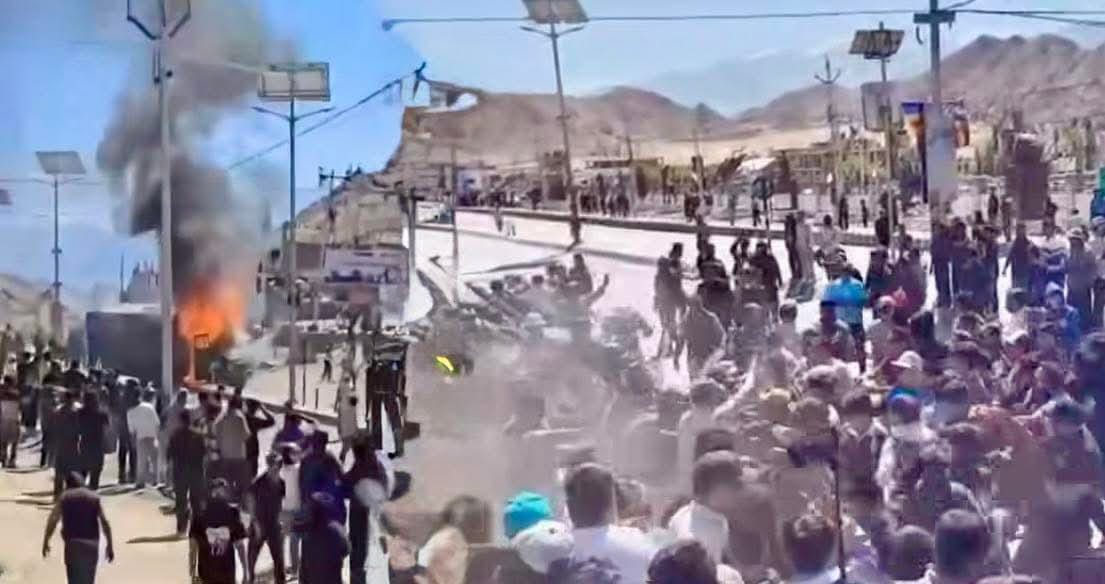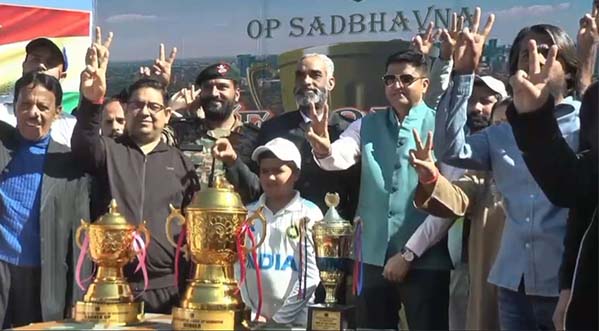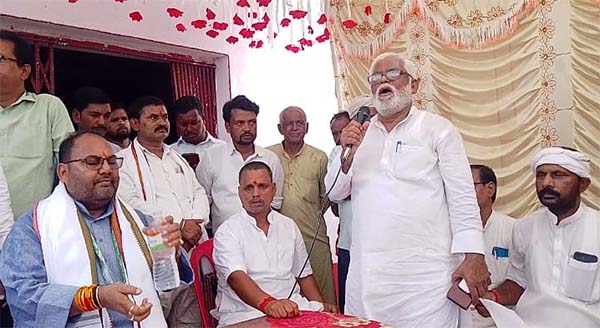Leh, Sept 24: The Union Territory of Ladakh witnessed its worst political turmoil since its creation in 2019, as violent protests demanding statehood and inclusion under the Sixth Schedule of the Constitution left four people dead and over 70 injured on Wednesday. Authorities clamped strict restrictions in Leh town, imposed prohibitory orders under Section 163 of the Bharatiya Nagarik Suraksha Sanhita (BNSS), and rushed additional paramilitary forces to restore order.
Hunger Strike Sparks Outrage
The unrest was triggered after two elderly men participating in a hunger strike — part of a 15-person fast launched on September 10 under the leadership of renowned climate activist Sonam Wangchuk — were shifted to hospital in critical condition. The news spread rapidly, fueling anger among demonstrators who clashed with police, resorted to stone pelting, and set ablaze the BJP office in Leh and a vehicle.
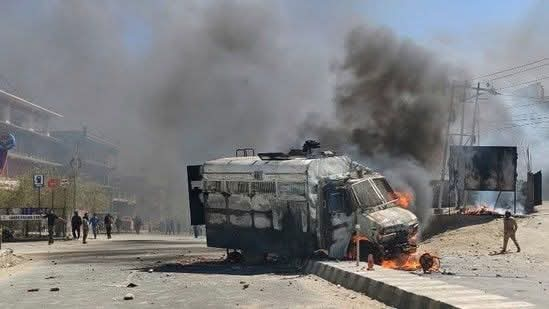
Security forces responded with baton charges and tear gas, leading to casualties. Officials confirmed four deaths, while over 70 people, including police personnel, sustained injuries.
Wangchuk Condemns Violence
Speaking to reporters after the day-long unrest, Sonam Wangchuk expressed grief over the tragedy and urged protesters to shun violence:
“What happened today is very sad. It is being said 3–4 youths have been killed. This movement was never about violence. I request the youth to stop arson and confrontations. Lives should not be lost for our cause.”
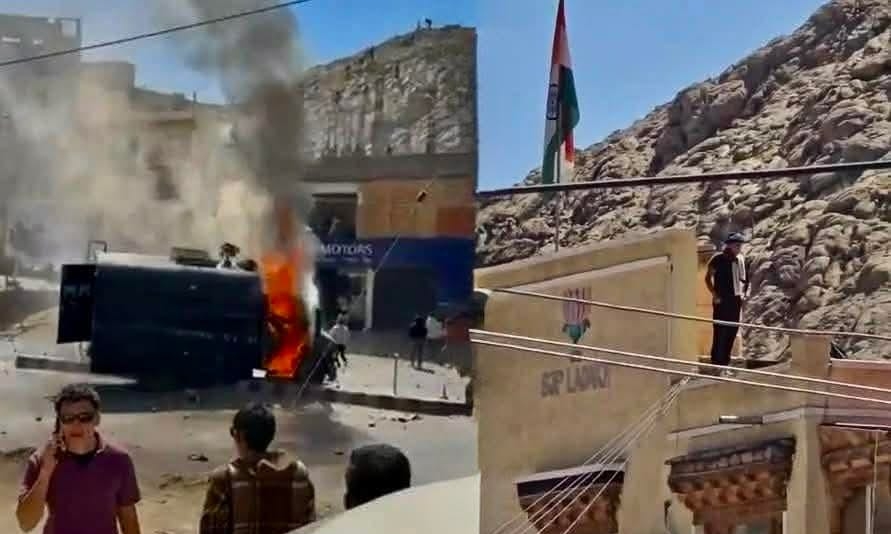
He emphasized that the campaign for statehood and Sixth Schedule status must remain peaceful, highlighting that Ladakh’s fragile ecology and cultural identity were at the heart of the demand.
Omar Abdullah Reacts
The violence also sparked political reactions beyond Ladakh. J&K Chief Minister Omar Abdullah took to social media to draw a parallel between Ladakh’s situation and Jammu & Kashmir’s long-pending statehood demand.
“Ladakh wasn’t even promised Statehood, they celebrated UT status in 2019 & they feel betrayed & angry. Now try to imagine how betrayed & disappointed we in J&K feel when the promise of statehood to J&K remains unfulfilled even though we have gone about demanding it democratically, peacefully & responsibly,” Abdullah wrote on X.
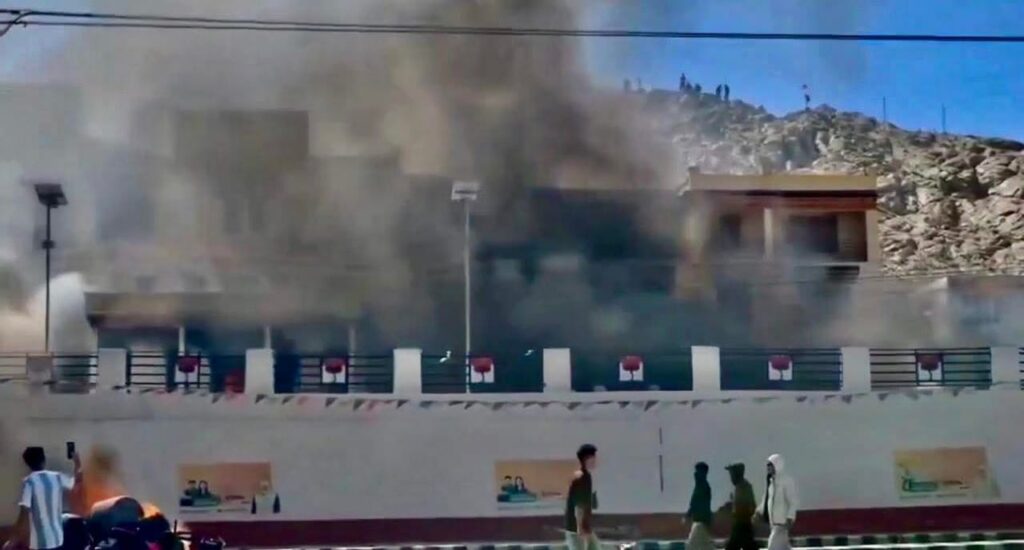
His remarks struck a chord with many in J&K who see parallels between the two regions’ struggles post-2019.
Centre Calls for Calm
While opposition leaders trained guns on the government, officials in Delhi appealed for restraint. A senior Union Home Ministry source said:
“We are monitoring the situation in Ladakh very closely. While we respect the democratic right to protest, violence cannot be tolerated. Dialogue remains the only way forward.”
The BJP’s Ladakh unit also condemned the arson attack on its office, terming it “unfortunate,” but maintained that the Centre was committed to Ladakh’s development and protection of local culture.
A Long-Brewing Agitation
Since its separation from Jammu and Kashmir on August 5, 2019, Ladakh has functioned as a Union Territory without a legislative assembly. While many initially welcomed the new status, discontent has grown over the absence of constitutional safeguards for land, jobs, and environment.
Civil society groups, student bodies, and religious organizations in Leh and Kargil have united under the banner of the Leh Apex Body (LAB) and Kargil Democratic Alliance (KDA), pressing for:
Full statehood for Ladakh.
Inclusion under the Sixth Schedule to protect land and resources.
A Public Service Commission and separate recruitment mechanisms.
Situation Tense but Under Control
Officials late Wednesday evening said the situation in Leh remained tense but “under control.” Internet services were reportedly slowed in some areas to curb misinformation. Authorities appealed for calm, assuring that all issues would be addressed through dialogue.
The Road Ahead
The Ladakh unrest marks a turning point in the region’s political trajectory. Once seen as a celebratory beneficiary of UT status, Ladakh now finds itself at the center of a storm over autonomy and representation — a struggle drawing parallels with the neighboring Union Territory of Jammu and Kashmir.
Report: Mansoor Qadir, ITN.

